Mulberry Tree
Mulberry Tree, from the steppes of Central Asia and the mountain ranges of eastern China, mulberries traveled to Europe and the United States, bringing luscious dark fruits and priceless silks.
The common mulberry tree is fairly fast-growing and can grow 10 to 20 feet tall over a four to six-year period.
Like most trees, mulberries take a year or two to become established and then grow quite fast and can act as a true shade tree.
There are 3 main types of these trees: black, white, and red mulberry tree.
Black mulberries ( Morus nigra ) are also known as Persian and are the trees that, on the whole, give the best mulberry fruit.
The berries of ( M. alba ) come in a range of colors, from white to dark purple, but they tend to lack flavor; according to Alexandre Dumas, they are ‘used for feeding farm animals, which eat them with great pleasure.’
With these trees, the leaves are important, providing food for the humble but industrious silkworm.
Red mulberries ( M. rubra ) are native to North America and are renowned as ornamental trees, but their berries tend to be tart, and their leaves are unsuitable for silkworms.
THE NAME
The name Morus comes from the Latin mora, meaning delay.
Mulberries are often called the wise fruit, first by Pliny in his Natural History, as they do not start to grow in spring until the danger of frost is over:
‘Of all the cultivated trees, the mulberry is the last to bud, which it never does until the cold weather is past…but when it begins to put forth buds, it despatches the business in one night and that with so much force that their breaking forth may be clearly heard.’
Later in the seventeenth century, John Evelyn offered more practical advice regarding when it was safe to bring orange trees out from their winter protection in conservatories:
‘observe the mulberry tree when it begins to put forth and open the leaves (be it earlier or later), bring your oranges, etc., boldly out of the conservatory.’
Black and white varieties are separate species, but in his Metamorphoses, Ovid has a more fanciful origin for the black fruits in the tale of Pyramus and Thisbe.
The two young lovers decided to elope, arranging to meet beneath a white mulberry tree.
Thisbe arrived first but was frightened by the roar of a lion and ran away, dropping her cloak.
The lion, bloodstained from a recent kill, mauled the cloak and then left. Pyramus arrived, was devastated at the death of his love, and stabbed himself.
When Thisbe returned, she found him dying and, distraught, she took his sword and killed herself ever after their blood had turned the white berries blood red.
ANCIENT TIMES
Black Morus seeds have been found in early Egyptian tombs and were cultivated by both the Greeks and the Romans.
The tree was dedicated to Minerva, the goddess of wisdom, and Horace recommended eating mulberries at the end of a meal as a method of keeping healthy during the summer heat.
As well as eating the fresh fruits, the Romans made mulberries into wine and syrup. Pliny warned that the juice of ripe fruits would stain the hands, but the stain could be washed out with the juice of unripe fruits.
At Pompeii, a black morus is depicted in the peristyle of the House of the Bull, and mulberry leaves are included in a mosaic in the House of the Faun.
Black mulberries may also have ancient origins in western Asia and Eastern Europe.
In prehistoric Armenia and Kurdistan, they were dried and made into cakes to eat during winter and reputedly used as currency.
Mulberries In Britain
Mulberries were almost certainly brought to England by the Romans, and, as the fruiting trees do not travel well, trees were likely planted.
Excavations of Roman sites in London found mulberry pips dating from the first century AD.
The trees are long-lived and grow true from seed, so it is probable that trees planted by the Romans, or their seedlings, would have survived until Anglo-Saxon times when they were called ‘moonbeams.
Morus often survived in monastery gardens throughout the Middle Ages, and the berries became popular at Tudor banquets.
In the 1551 edition of his Herball, William Turner’s description of the fruit gives the impression that it was already fairly widespread.
The trees quickly develop a gnarled appearance, making them look old beyond their years, but they are also very long-lived.
SILK
Mulberries have been cultivated in China for silk for over five thousand years.
Due to Alexander’s eastern campaigns, the fabric probably arrived in Europe around 330 BC, brought along the Silk Road, with other goods from the east.
Pliny described the fabric as showing the person through it rather than covering and hiding their form. Emperor Tiberius passed a law making it illegal for men to wear the fabric as he felt effeminate.
Virgil, Aristotle, and Pliny all connected the fabric with silkworms. Still, none linked to Morus Myths regarding the production, including that which said the silkworm made its cocoon in the eyebrows maiden.
The thread is spun by the Chinese silkworm ( Bombyx mori ), eating mulberry leaves.
Silk was (and still is) a valuable commodity; in 524, it was sold in Europe for its weight in gold.
The Chinese protected the secret of its production, and heavy penalties were inflicted on anyone caught smuggling the trees, seeds, or silkworms abroad.
The first place outside China to practice sericulture was the Kingdom of Khotan in Central Asia in 140 BC.
According to the story, the King of Khotan married a Chinese Imperial princess, and before the wedding, he warned his bride-to-be that if she wanted to continue to wear silk, she would need to enable him to produce it for her.
Legend has it that she smuggled out Morus seeds and silkworm eggs in an elaborate headdress. Silk production spread to India and along the Silk Road.
Two Persian monks traveled to China in the sixth century and smuggled silkworms out hidden inside a bamboo cane.
They took them to Constantinople, and from there, the secrets of silk spread across mainland Europe, first to Italy, after the Sack of Constantinople in 1204 forced many artisans to flee, and then to Lyons in France, which, in 1540, was granted a monopoly by François I.
In France, Henri IV (1589-1610) planted morus in the Tuileries as part of his building and gardening projects.
Under his instruction, over 15,000 trees were planted in the gardens. Most of these were white and were pruned for maximum silk production.
Morus In The Nursery
USES
Benefits
Mulberries share many of the free radicals antioxidant benefits of cherries. As sources of vitamins C and K and potassium, calcium, and iron, they are little power packs.
The potassium helps boost energy levels, repair cell damage (those antioxidants again) and boost the immune system.
Digestive Health
Mulberries are a good source of fiber, one serving to provide 10% of your recommended daily intake.
Fiber aids move food through the digestive tract more efficiently, reducing the risk of constipation, bloating, and cramps.
Historically, a syrup made from mulberries is recognized in the British Pharmacopoeia as an expectorant, a laxative, and an effective gargle for sore throats.
Gerard recommends it, stating: ‘The barke of the root is bitter, hot and drie, and hath a scoring faculty, the decoction hereof doth open the stoppings of the liver and spleen, it purgeth the belly and driveth forth worms.’ Nice…
Blood And Circulation Benefits
Morus Tea
Bone Health
Eye Health
How to Grow Morus Trees
How to Care for a Mulberry Tree
Pruning Morus Trees
Thereafter, only judicious pruning of mulberry trees is necessary, really only to remove dead or overcrowded branches.
Producing Mulberry Wine Through Fermentation
Northwestern University has filed a Chinese patent application for a method of fermenting mulberry wine. It was developed by Xu Kangzhen, Huang Jie, Cao Wei, Ma Haixia, Ren Yinghui, Jia Ge, and Song Jirong.
According to the patent abstract published by China’s State Intellectual Property Office: “The invention describes a method for fermenting mulberry juice to produce a high-quality mulberry wine.
The primary raw material is mulberry juice; the selected saccharomyces cerevisiae is used for direct fermentation to produce raw mulberry wine; the raw mulberries wine is then pasteurized, aged, clarified, filtered, and filled to obtain the high-quality mulberry wine product.
The mulberry wine product is all-natural, free of cane sugar, citric acid, and other additives; the mulberry wine is nutrient-dense, attractive in color and luster, fruity and soft in flavor, and mellow in flavor.”























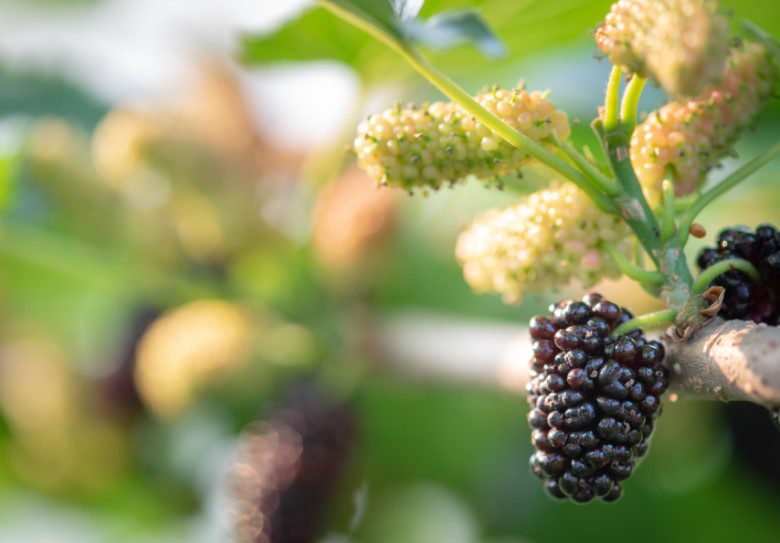
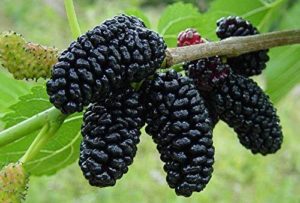
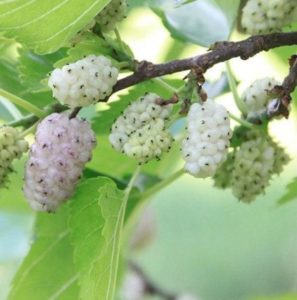
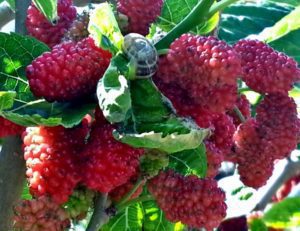
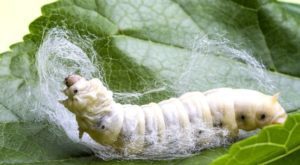




Comments are closed.